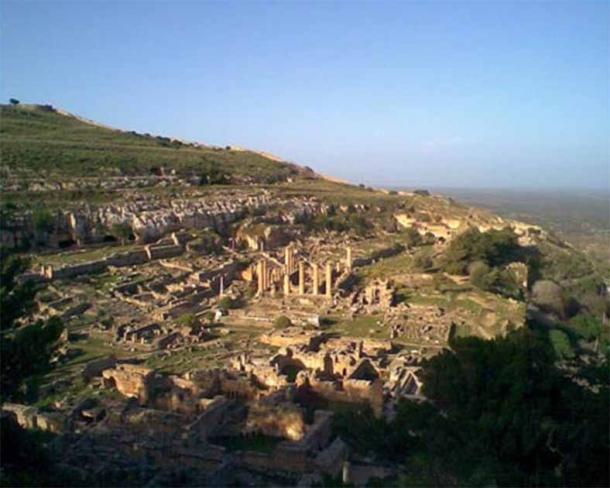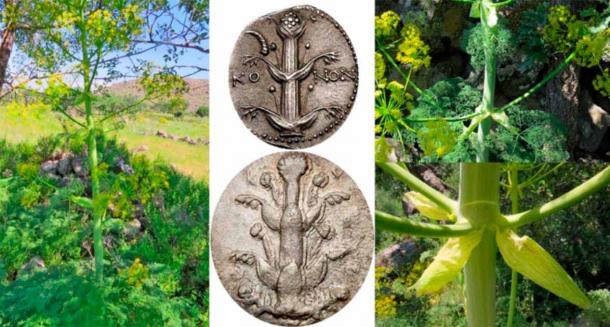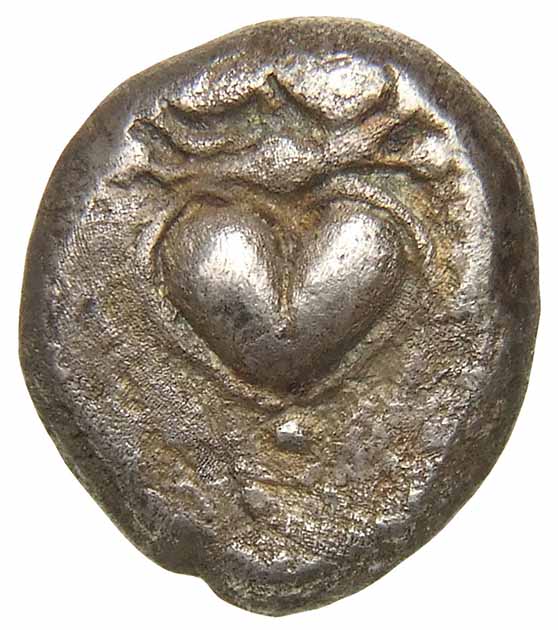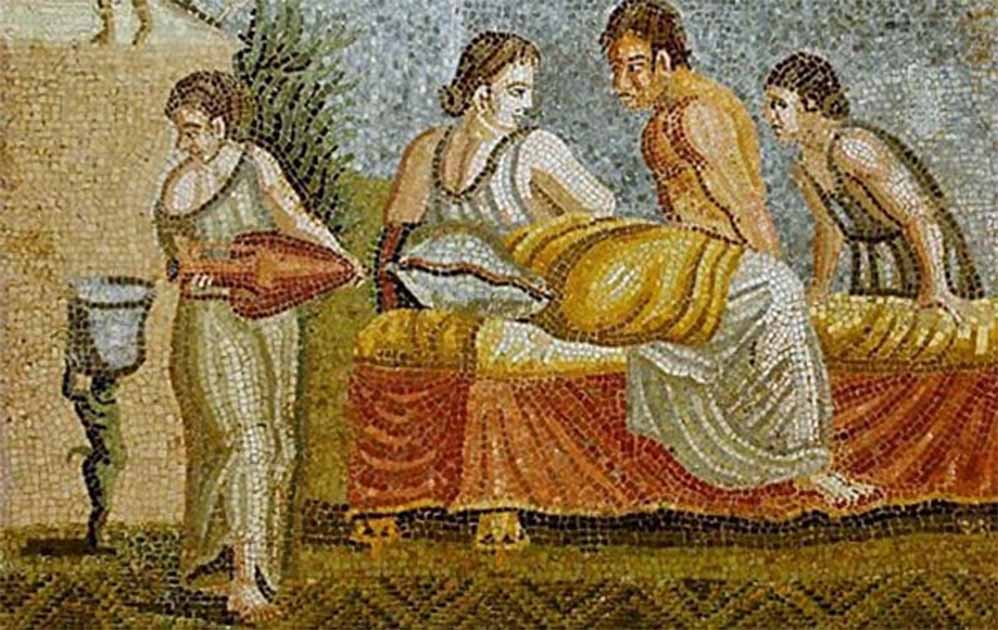Silphium, The Ancient Contraceptive Herb Driven To Extinction
As an institution of spiritual authority, the Catholic Church wields much influence over the attitudes and beliefs of millions of people around the globe. From scriptural doctrine to less refined codes of behavior, the Pope, of which there have been 266 over the last 2000 years, holds the power to inform the more than 1.2 billion Roman Catholics, or 2.18 billion Christians globally on the many aspects of Christian faith and behavior expected by the church hierarchy.
Of course, not everyone agrees with the teachings of the church, and in that regard, there are some subjects that are, shall we say, a little sticky in public discourse. Pope Francis – the first ever pope to bear the name Francis, in honor of St. Francis of Assisi – has been making long strides in steering the Catholic faith to a more progressive, forgiving, and moderate position on many issues of social import.
But two areas in which even Pope Francis has yet to take a more liberal view is that of contraception and abortion. These issues, if nothing else, have a tendency to be passionately polarizing in public debate and discussion, though abortion is often the leading cause of strife in those conversations. It seems that fewer people are upset or feel as passionate about the denial of contraception among populations where unchecked procreation and disease are linked so strongly. Or perhaps it’s because the church’s stance on the issue of contraception hasn’t changed much over the years. In fact, Papal condemnation of birth control is one of the church’s longest standing decrees. Famous names in the history of the Catholic Church, such as Clement of Alexandria, Hippolytus of Rome, and Augustine of Hippo, have made strong condemnations of the use of any method that artificially blocks conception.
This wasn’t always the case, however.
- Sacred Plant of Eternal Love and Healing: The Mythology and Magic of Basil
- Ancient Methods of Contraception – Even Tutankhamun Wore Protection
The Role of Silphium in Ancient Greek and Roman Societies
While it’s true that the Catholic Church and it’s Fathers have been opposed to the idea of contraception since Saint Peter was given the burden of building Jesus’ church, prior to that, contraception was widely used in Rome. In fact, the Romans may have been responsible for causing the extinction of what some have called the most effective herbal contraceptive ever to exist, through overuse. It didn’t start with the Romans though.
That herb is known as Silphium. It was a plant, possibly related to parsley, or more accurately a type of giant fennel plant cultivated for its resin – known commonly as laser, laserpicium, or lasarpicium - which was used as a culinary additive, a topical ointment or salve, and a medication for several ailments, and most relevant to this discussion, a form of birth control. There isn’t a lot known of it, in fact, it’s relation to the family Apiacaea (celery) is mostly speculation, though most sources will attribute it to the genus Ferula.
What we do know of it, is that it was cultivated in the oldest Greek city in North Africa, called Cyrene (now Libya). Legend suggests that the Greek Battus and his men were led to a place called Apollo’s Fountain beyond the fertile grounds of Israsa, for the Libyans said the place had a hole in the sky (likely because the area received an unusual amount of rainfall) [I,ii]. Battus settled there and named the city Cryene in 630 BC. Silphium became so important to the Cyrenian economy that the plant appeared on almost all of their currency.
- Filthy Philaenis? The Ancient Mediterranean Sex Guide that Steamed Up the West
- Did Eternity Obsessed Ancient Egyptians Know How to Prevent Pregnancy?

Ancient silver coin from Cyrene depicting a stalk of Silphium (Public Domain)

The ruins of Cryrene (Shahhat), Libya. (Public Domain)
Silphium: A Mysterious and Potent Herbal Contraceptive
The other thing we know for certain, is that it was possibly the most popular and effective herbal contraceptive ever produced. Naysayers, namely the “world smartest man”, Cecil Adams, claims (and somewhat overstates) that the notion of a successful Planned Parenthood program across multiple nations for several centuries is a stretch. [iii]. But any way you slice it, the plant was a staple in the toolkits of physicians and mystics across the Mediterranean for at least 700 years.
The plant first appears in historical records dating from 7th century BC Egypt, where we know it was part of medicinal recipes for contraception and abortion, as well as remedies for anything from coughs and sore throats to leprosy treatments and wart remover. In fact, the Egyptians and the Knossos Minoans each developed specific glyphs to represent the plant, which clearly illustrates the importance it enjoyed in these early Mesopotamian cultures. [iv]
It was a versatile commodity too, as nearly every part of the plant was used, from the stalk to the resin, to the tuber like roots. So versatile and sought-after, in fact, that it was over-cultivated and sold into extinction by the 1st century BC. Pliny the Elder claims, in his Natural History, that the very last stalk of silphium ever harvested was given to Roman Emperor Nero as an ‘oddity’, which, according to some accounts, he promptly ate. There are those, however, who believe that it isn’t extinct, but merely misidentified. Several candidates from modern botanical sources have been presented variously as either direct examples of silphium, or as modern descendants of the original plant. None, though, are widely thought to be viable candidates.
Other than the possibility that the rampant use of an artificial contraceptive and abortifacient by Roman pagans may have contributed to the early Christian idea that in any way blocking conception is a most evil thing, silphium has impacted our society in another unusual way.
A Botanical Mystery: Contemplating the Survival of Supposedly Extinct Species
In 1983, Professor Mahmut Miski a researcher of plant medicines at Istanbul University in Turkey claims to have discovered Ferula drudeana, when he stumbled upon the plant while hiking near Mount Hasan in central Turkey, unaware of its potential significance as ancient silphium until two decades later. Upon returning to the same location, he was astonished to find a flourishing population of the plant after the snow had melted. If Professor Miski's assertions are validated, it suggests that this supposedly extinct ancient species has persisted unrecognized for over 2000 years. The potential acceptance of his findings raises intriguing questions about the existence of other supposedly extinct plants awaiting rediscovery and identification.

Comparison of Ferula drudeana plants with representations of silphium. (Mahmut Miski/CC BY 4.0)
Debunking Myths: From Buttocks to Botanical Depictions
You may have heard that the common heart symbol, which is shaped nothing like an actual heart, is actually a representation of either the stylized shape of the female buttocks, or pubic mound, or is a medieval depiction of various flowering plants, such as fig leaves, ivy, or waterlilies. However, the use of the familiar double-tear shaped heart symbol first appears in the historical record on the currency of Cyrene.
The undeniable shape, which is believed by most to be a reproduction of the visual appearance of the silphium seed, has some people wondering if the origin of the modern symbol for romance and love is in fact quite a bit older than the Middle Ages.

Ancient silver coin from Cyrene depicting a heart-shaped seed/fruit of silphium. (Public Domain)
Certainly, the connection between silphium and sex is apparent, though it’s not exactly a complimentary connection. However, a number of contemporary writings, namely Pausanias’ Description of Greece and a love poem from Catullus to his wife Lesbia (Catullus 7) draw a deliberate and unmistakable correlation between laserpicium and romance. It may be that the medicinal properties of the plant were regarded as a means to treat madness or lovesickness.
Unfortunately for those who might support that line of reasoning, there is no known connection between that use of the symbol and the modern use, therefore most symbolists deny that the concept originated with a contraceptive. Though that would be some world-class irony.
Top image: A Roman love scene. Mosaic found in Centocelle (1st century AD). Source: Kunsthistorisches Museum/CC BY-SA 2.5
References
Cecil A. 2006. Did the ancient Romans use a natural herb for birth control? Available at: http://www.straightdope.com/columns/read/2676/did-the-ancient-romans-use-a-natural-herb-for-birth-control
Hogan, C. M. 2007. Knossos fieldnotes. Available at: http://www.themodernantiquarian.com/site/10854/knossos.html#fieldnotes
Unknown. Herodotus, transl. Aubrey de Selincourt, Penguin, , p. 295
Unknown. The plant Silphium silphium. Available at: https://www.sylphium.com/html/plant_silphium.php

















Comments
I think he was a plant silphium not entirely extinct, I'm here in Cyrene see some forms of plant has a very close,, and i make some research to prove it, I think it mutated slightly in shape
So in a way for as long as people may have wanted to control the birth process, that’s what they’ve been trying to do.
love, light and blessings
AB
celery or asparagus....
look at the top, or the leaves on the sides of the plant
Apologies for not responding sooner, I didn't see your comment until now.
Information about the abortifacient properties of the plant are sparse, but as I understand it, a compound, the main ingredient of which was silphium, was actually inserted into the womb, wherein whatever chemical element the plant possessed did its work.
I couldn't speak to its effectiveness in that regard, but I have seen accounts of recipes for the contraception that called for applying a poultice of the herb to the outside of the vagina, and I can't imagine how that might have worked. I can only assume it was misattributed and should have been called an abortifacient method rather than contraceptive recipe.
On the issue of the Catholic contraception edict, yes, that's correct, though my point was simply that the rampant use of this plant in the previous era could have contributed to the public view that contraceptives are evil, which was reinforced by doctrine. Or vice versa. T'was just a thought.
The Catholic edict against contraceptives has its roots in laws and traditions of the Old Testament Hebrews, I'm fairly certain. It is not/was not a reactionary edict, it was a continuation of an ancient tradition.
What a fascinating article. I'd never heard of the plant before reading this, and I'd never heard of harvesting a plant to extinction either. Is that really possible? I mean, normally if a plant is in such high demand, people start cultivating their own rather than go hunting for wild ones all the time. How did this happen?
The possibility that the "valentine" heart symbol has its origins in the seed of a contraceptive herb seems highly plausible to me.
It's also totally hilarious.
"Dat heart don't stand fo luv, babeh, it stand fo lust!
You mention ancient "abortions". How did that work, exactly?